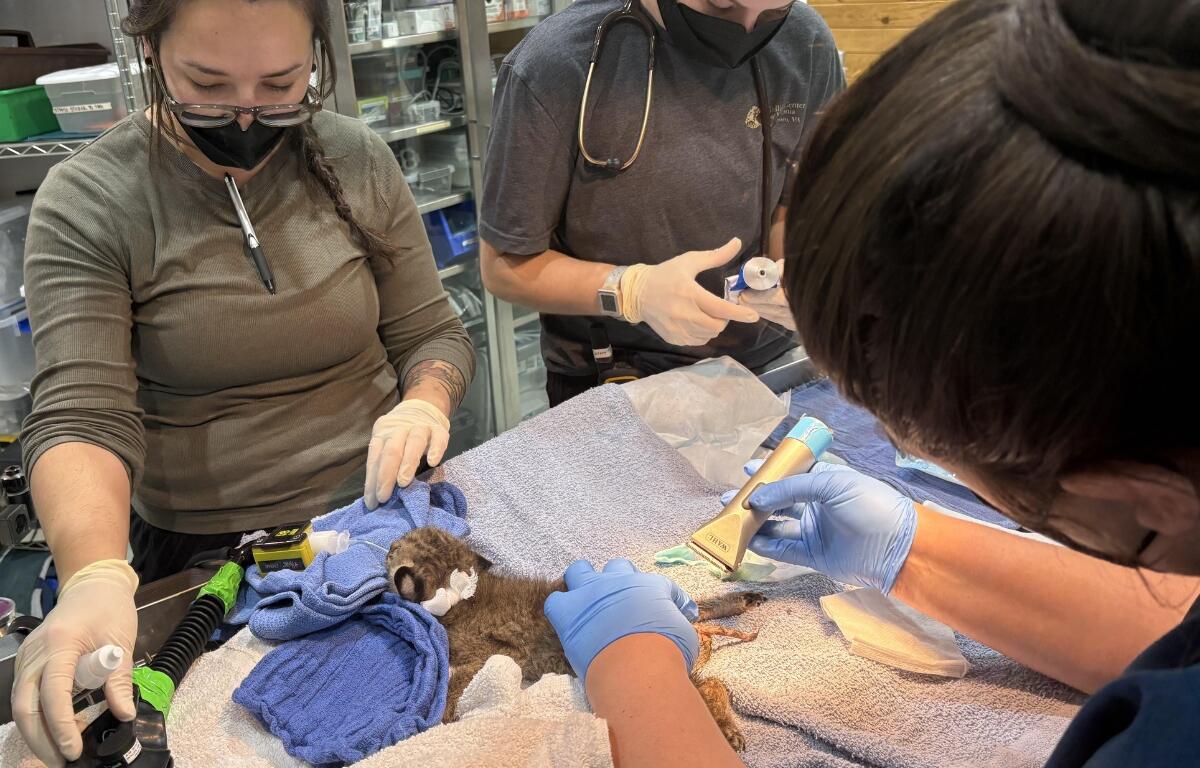WAYNESBORO, VA (Rocktown Now) — On September 12, the Wildlife Center admitted a rarely seen patient—a six-week-old Bobcat kitten. The kitten was found alone on a road in Highland County, with no signs of her mother or siblings nearby, and was quickly brought to the Center for care.
Bobcats are secretive animals that are rarely seen by people. Once fully grown, they typically weigh between 10 and 25 pounds and are easily recognized by their short tails, long legs, and reddish-brown fur. These solitary predators are most often found in heavily forested or mountainous areas, where they hunt rabbits, squirrels, and other small game.
Upon admission, the Bobcat kitten was bright and alert. The Center’s veterinary team examined her and found that she was thin, dehydrated, and had a necrotic wound on the tip of her tail. Bloodwork showed she was mildly anemic, and a fecal exam revealed she had gastrointestinal parasites—signs that she had been without her mother’s care for some time.
“It’s a little late in the season to see a kitten this young. We’re not sure exactly what happened, but she was likely either orphaned or abandoned,” explained Dr. Miranda, one of the Center’s veterinary interns.
After the exam, the veterinary team administered fluids and began anti-parasitic treatment. They also provided a bowl of formula along with a high-protein soft food mix, then settled the kitten in the Center’s Expanded ICU to rest.

Over the next several days, the Bobcat kitten responded well to treatment and gained more than 200 grams. Once stable, the veterinary team anesthetized her to surgically amputate the damaged tip of her tail. The procedure went smoothly, and she is now receiving antibiotics and pain medication while continuing to recover in the ICU. The team reports that the kitten has remained bright and active.
“She is feisty and will hiss, growl, or pounce at us when we enter her enclosure—which is a good thing, because we want her to stay wild and keep her natural fear of humans,” said Alex, the Center’s rehabilitation supervisor. “Our goal is to balance providing care and enrichment while also staying as hands-off as possible.”
The Center’s current plan is to care for the kitten through the winter, with the goal of releasing her back into the wild next spring, once she is old enough to survive on her own. Until then, staff will continue to closely monitor her progress and provide updates on her care.




